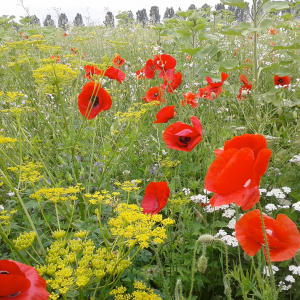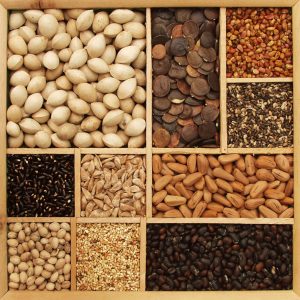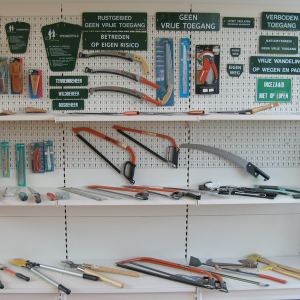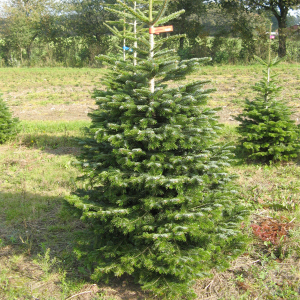Sowing advice and maintenance of field edges
General
Flowery field margins stimulate biodiversity and help to improve pest control in agricultural crops in a natural way. Various insects such as hoverflies, parasitic wasps, bees, lacewings and butterflies come to the field edges. The field margins are also frequently visited by birds such as partridge, skylark, goldfinch and yellow wagtail.
Tillage field edge mixtures
The presence of weeds can be a difficult problem when creating a field margin mix. The plot that is sown may contain weed seed that will germinate as soon as the conditions are favorable. It is therefore advisable to carry out the weed control in two stages. Before the tillage takes place, the terrain should be cleared of weeds as much as possible. This can be done mechanically as well as by spraying a herbicide. It is then recommended to create a false seedbed. A few weeks before sowing the flower mixture, the seed bed is made, after which the weed seed present will germinate. Just before sowing the field edge, another light tillage is carried out. As a result, the initial development of the unwanted herbs will be delayed and the chance of success of the flower mixture is greater.
Sowing
For best results, field edge mixtures are sown in the spring (March-June). The sowing depth is 1-2 cm. The seed can be sown with a cam wheel seeder. Depending on the desired density of the crop and the sowing method, it is also possible to mix filler with a mixture. This makes the mixture easy to sow, because less segregation occurs in the seed drill.
Maintenance (perennial field margins)
A field edge sown with a flower mixture should not be cut too early.
If this happens, the annuals will not be able to form seed and will have the next growing season
completely disappeared.
If the clippings are not too bulky, it can remain. However, it is advisable to shrink the soil and dispose of the clippings. The best method is to mow the mixtures once a year, when most of the flowers have formed seed. Mowing is preferably done during a dry period, after which the mowed crop remains in the field for 4 to 5 days. This field period is important to promote seed loss. It is preferable to mow a little later in the summer. Make sure it doesn't happen in rainy conditions. The desired cutting height is 8 to 10 cm, otherwise the formed rosettes of the flowers will be damaged. This impairs regrowth in the following year.
Mowing means that annual species may not return the following year unless they have been given a good opportunity to sow properly. Finally, it applies to many flower mixtures that the plant species are difficult to handle. Nevertheless, this is an important limitation from an efficient use of field margins in business operations. It is therefore also recommended to pay particular attention to driveability when choosing the flower mixture.









